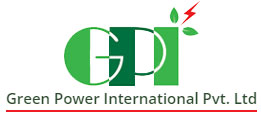Waste heat minimisation and recovery is a significant opportunity to improve efficiency and reduce energy bills. It can also mean lower maintenance costs and improved equipment productivity as energy-using equipment can be operated less intensely.
Reduce unnecessary heat generation and loss.
Before investing heavily in heat recovery equipment, you should first take action to reduce unnecessary heat generation and losses. There may be several options to reduce waste heat in a facility, including:
- Insulating areas of high heat loss such as pipes and exhaust stacks
- Equipment tune-ups such as optimizing air fuel ratios
- Implementing automated controls
Maintain heat exchangers
Thorough maintenance of existing heat exchange systems can deliver quick wins by ensuring the equipment is performing to its potential. Substantial reductions in performance can occur gradually over time. Areas to pay attention to include:
- Cleaning heat exchange surfaces
- Cleaning dirt and obstructions from ductwork
- Ensuring proper operation of damper actuators and seals
- Unblocking valves and drains
- Adjusting control settings for optimal performance
Industrial Processes: Excess heat is utilized in various industrial processes, such as drying raw materials, to enhance energy efficiency and reduce operational costs.
Cogeneration & Trigeneration
Cogeneration – combined heat and power (CHP) and trigeneration – combined heat, cooling, and power (CHCP) are coming to be used more and more in industry and building applications. TES systems can store the excess heat or cold produced from CHP and CHPC applications.
- Stabilization of heat production by acting as a buffer between production and variable demand
- Decreasing the interdependence of running the CHP/CHPC device and the thermal demand
- Reduction of gap between peak power production and demand
- Increasing the number of hours of operation and feasibility of the plants even in small range of powers
- Increasing the revenues due to the increase in heating and cooling energy that can be solarized refers to generating two usable energies from a single fuel input. Typically, the first output is electrical power, while the second can be steam or hot water, also known as Combined Heat and Power (CHP). However, the second output can also be chilled water in hotels and commercial buildings.
CHP systems, including CHPC, are pivotal in reducing energy consumption and waste and promoting sustainability. This approach, supported by Green Power International, not only fosters environmental responsibility but also brings economic benefits, paving the way for a better future.














